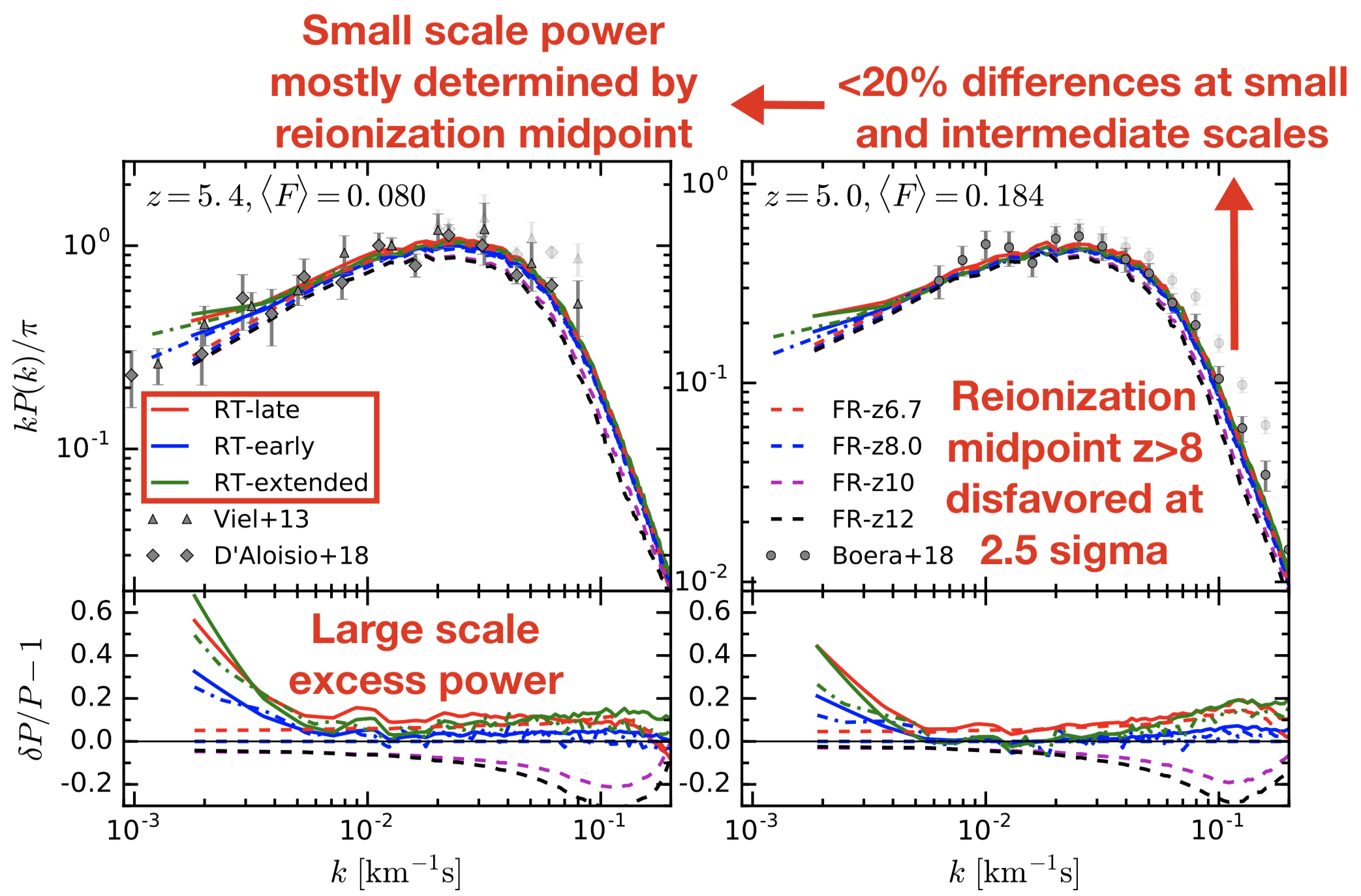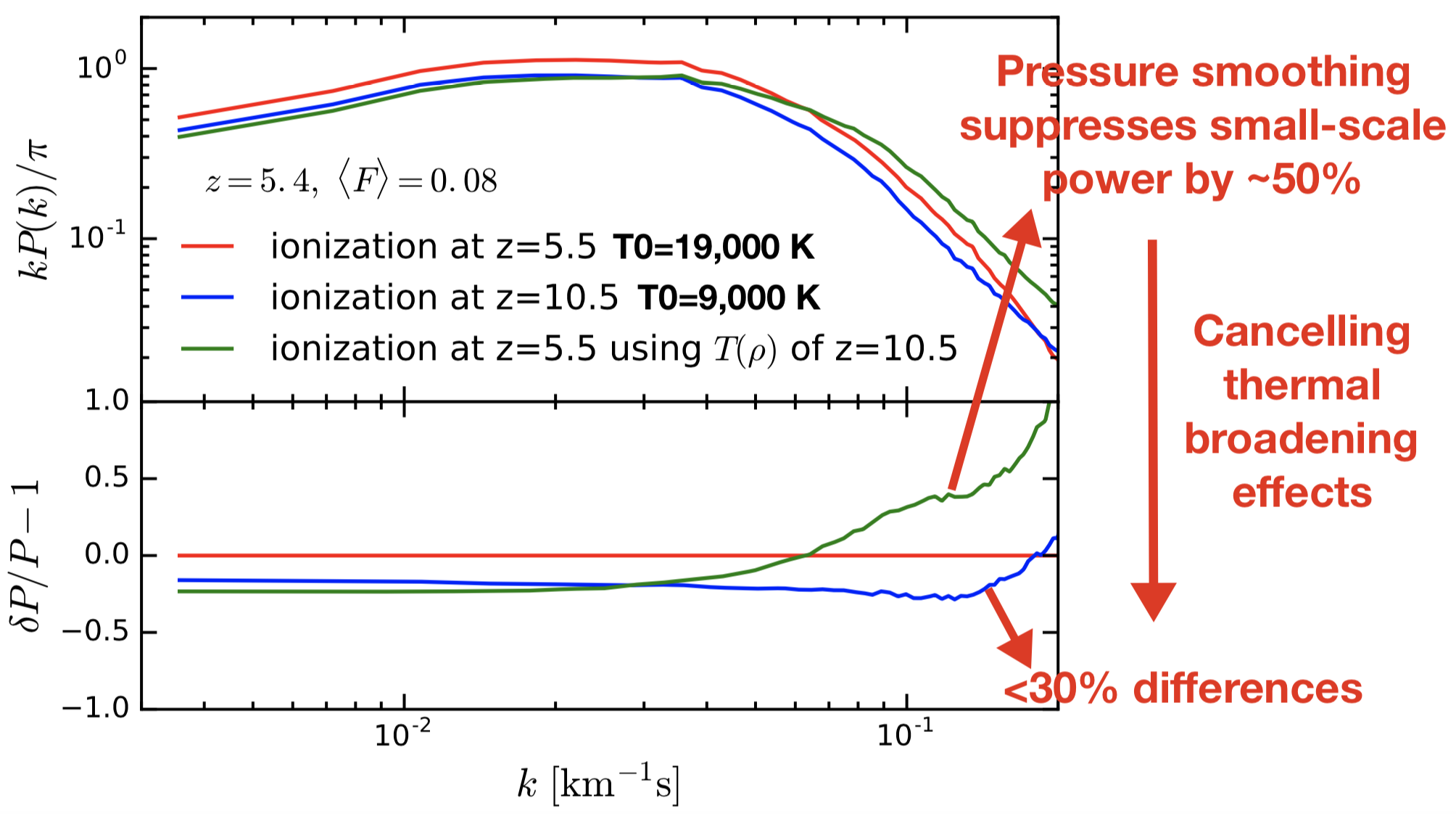Temperature fluctuations in the Lyman-α forest
The Lyman-alpha forest — the series of Lyman-alpha absorptions by neutral hydrogen atoms in a highly ionized IGM — has been one of the most powerful probes of reionization. A patchy reionization where different regions of the universe are ionized at different times leads to order unity temperature fluctuations after reionization, resulting in large scatter in the neutral hydrogen number density and affecting the Lyman-alpha absorption. Patchy reionization thus likely changes the shape of the power spectrum of the Lyman-alpha forest flux via temperature fluctuations.
To explore the imprint of patchy reionization on the Lyman-alpha forest, I performed simulations with different reionization scenarios and created mock Lyman-alpha forest observations. I found that temperature fluctuations from patchy reionization brings 20-60% large-scale excess power to the power spectrum of the Lyman-alpha forest flux compared to uniform reionization, while the small-scale power is mostly determined by the reionization midpoint instead of its patchiness (Fig. 1). My results suggest that future observations may constrain the patchiness of reionization using the large-scale shape of the Lyman-alpha forest flux power spectrum. My work is also the first ever to show that current measurements of the IGM temperature and warm dark matter mass by assuming uniform reionization are unlikely to be biased by patchy reionization. Using the small-scale power spectrum, I also constrained the reionization midpoint to be smaller than redshift 8.

I also demonstrated that for the shape of the small-scale forest flux power spectrum, there is a surprisingly large cancellation between the effects of thermal broadening of the absorption lines and the thermal relaxation of the gas (pressure smoothing). Red and blue lines in Fig. 2 represent two uniform reionization simulations with very different reionization redshifts, but the fractional differences between the two power spectra at z=5.4 are <30% on all scales. The reason is that while the simulation ionized earlier (later) has much lower (higher) IGM temperature at z=5.4, the thermal relaxation of gas also lasts longer (shorter). This introduces a huge degeneracy between pressure smoothing and thermal broadening on the shape of the small-scale flux power spectrum, which appears to be more evident in our more realistic IGM thermal histories.
